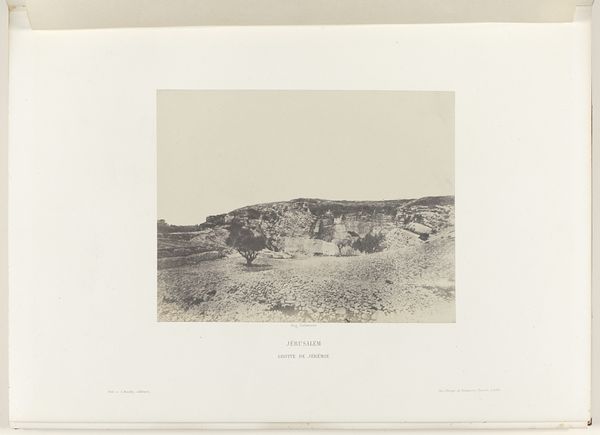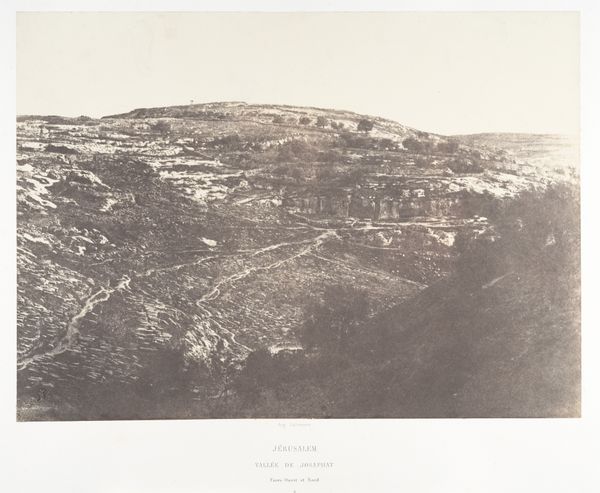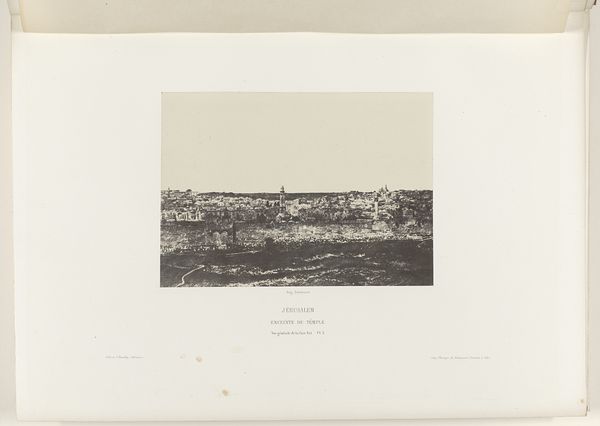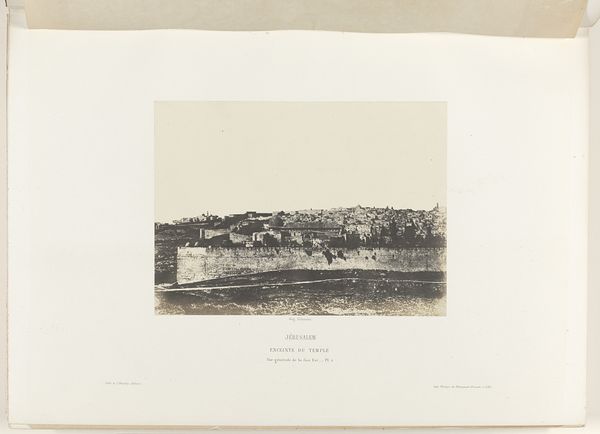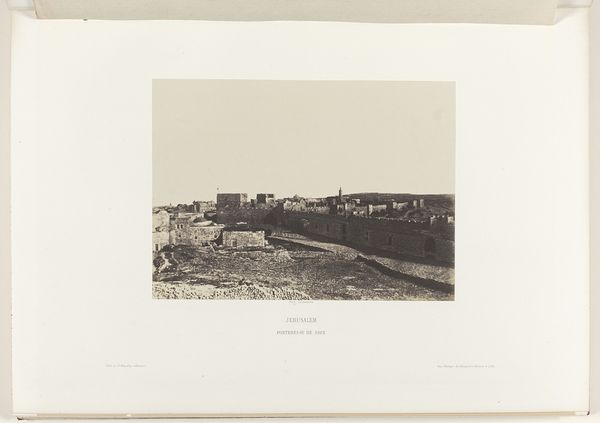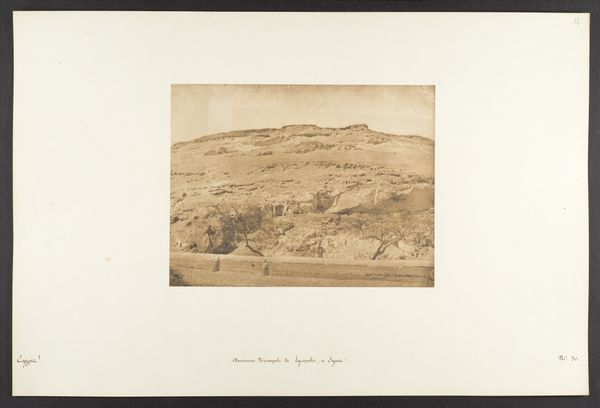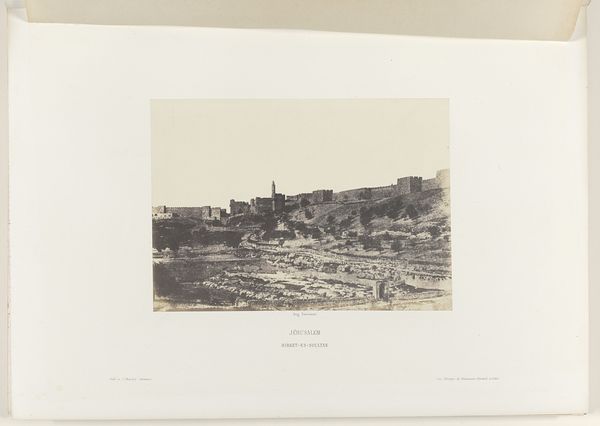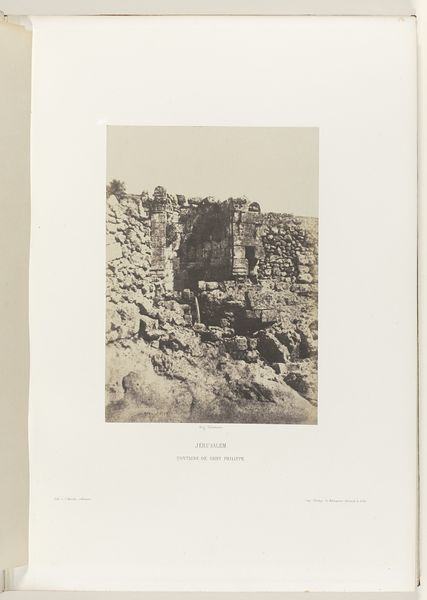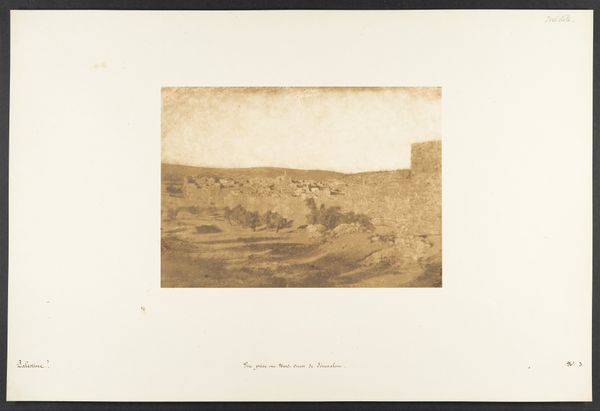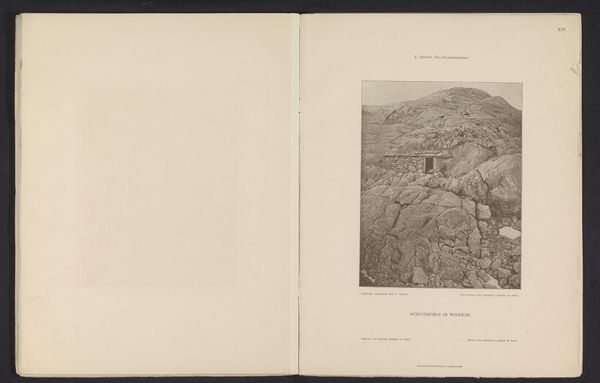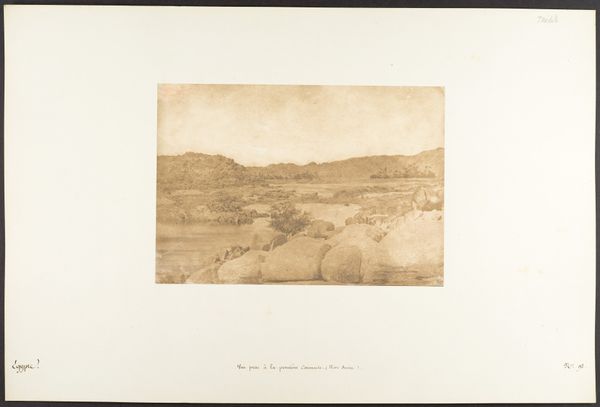
photogram, print, photography
#
photogram
# print
#
landscape
#
photography
#
orientalism
Dimensions: height 148 mm, width 211 mm
Copyright: Rijks Museum: Open Domain
Curator: This photogram, dating from around 1854-1856, captures Auguste Salzmann’s "View of the Valley of Josaphat, near Jerusalem". The orientalist landscape feels remarkably austere. Editor: Austere, yes, but powerfully evocative, too. It's a landscape rendered with such granularity, every contour defined by light and shadow. There's an almost desolate beauty to it. Curator: Exactly, that's interesting. Salzmann used a process employing photography prints in order to present, or rather, document the Holy Land, and doing so within the wider context of 19th century colonial endeavors and archeological missions. The choice of the photogram gives the scene this raw quality, stripping it down to its basic components of light-sensitive paper, negatives and the labour involved in creating and using such photographs on site. Editor: I think we should consider this within its socio-political context. Images like these fuelled European perceptions, contributing to the exoticism and orientalism of the region, reducing complex societies and diverse peoples into flattened representations ripe for exploitation. Curator: It’s precisely that duality which I find so striking. This isn't just a pretty picture. It's an object made to further colonizing Western views in relation to land usage, photographic manufacturing, the business of producing and printing images, and shaping global consumption of photographic orientalist themes. Editor: Right. The act of photographing this location, selecting this angle, was, itself, an act of power, reinforcing the dominance of the Western gaze. We are thus left examining what that implies when encountering historical material today. Curator: And so it becomes vital for viewers today to approach this work recognizing the interwoven histories that shaped it - from Salzmann's production methods and printing skills, the cultural power relations, all the way to our contemporary moment and reception of it. Editor: Absolutely, these considerations help us unravel the complexities behind the image, acknowledging its participation in a larger cultural dialogue surrounding power, representation, and the legacies of colonialism that persist today.
Comments
No comments
Be the first to comment and join the conversation on the ultimate creative platform.
